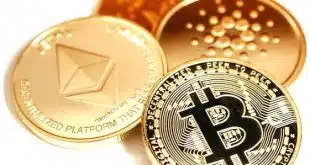By shifting stores and consumers to contactless payment, the pandemic made it easier to stop fraud.
One year into a global pandemic, and our lives will never be the same. The way we work, shop, travel, and entertain ourselves have all seen major changes during a year of living surrounded by Covid-19. With good news on the vaccination front, there is a sense that the world may finally begin returning to normal—but it will be a new normal.
For consumers, the transformation of digital transactions and payments brought on by the pandemic represents one of the few positive outcomes of this global health crisis.
The constraints of social distancing, periodic lockdowns, and remote working accelerated changes that were already in process for how we handle payments, order online, and use mobile apps. New words, such as BOPIS (buy online, pick up in store), have become part of our vocabulary and blur the line between Web and mobile channels, accelerating the move towards omnichannel marketing for retail.
Store closures during lockdowns created a reluctance among consumers to venture back into brick-and-mortar shopping once stay-at-home orders lifted. Because of the pandemic, consumers want to minimize contact with people. They keep their distance from other shoppers, restrict the time spent in enclosed spaces, and minimize contact with store personnel at checkout.
An Aptitude for Apps
Against that backdrop, contactless payments as a new option for checkout gave consumers more confidence that they could safely enter stores again by removing the exchange of cash and credit cards and associated contact at checkout.
Contactless payments are not new, but the effects of the pandemic have caused the market landscape for, and acceptance of, this method of payment to change considerably in the United States over the past year.
At the end of 2019, before the global pandemic was confirmed, Apple reported strong growth for Apple Pay, with revenue and transactions more than doubling year-over-year. Fast forward to Apple’s earnings report last September, and while Tim Cook said Apple Pay is doing exceptionally well, he also acknowledged “contactless payment has taken on a different level of adoption.”
The big winner for contactless payment during the pandemic has to be the resurgence of the QR code. With the 2020 introduction of QR code payment support by PayPal, vendors had an easy way to support contactless payments for any mobile user.
Scanning a QR code to make a payment was already a well-established payment method in China, however, in the United States it did not really take off until the pandemic. When Apple introduced Apple Pay, it chose to use NFC technology, rather than QR codes, for its contactless payments. When PayPal announced its QR-code payment support for merchants in May, this provided a much needed innovation to get consumers back into stores.
During the course of 2020, as Walgreens, CVS, and other major retailers added support for QR-code payments, the popularity of this payment method spread quickly. Shell and ExxonMobil added this capability to gas stations, and UberEats announced QR-code support for food delivery.
But it has not just been major companies that have adopted this approach. One of the strengths of QR-code payment is its flexibility. The implementation can be as simple as printing the merchant QR code and pasting it at checkout or presenting it on a point-of-sale device. Or, increasingly, retailers are seeing the advantage of integrating the payment method into their own mobile app.
Pinpointing Users
The merchant’s mobile app has now taken on a bigger role. In addition to contactless payments, retailers and merchants now also have the ability to provide mobile-wallet capabilities from within their app. Consumers can earn loyalty points, receive offers, make payments, store and use credits—all from within a merchant’s app, creating more stickiness for the retailer.
With this new payment method also comes new vectors for fraud, as fraudsters follow the money and look for ways to exploit any opportunity. In the case of contactless payments, retailers and fintechs providing mobile wallets are looking to new fraud-detection techniques that use the mobile device and associated user behavior to differentiate trusted users from fraudsters.
For contactless payments, device and location information is a strong trust signal that can be used to stay one step ahead of the fraudsters. Given that users keep their phones with them at all times—in their pocket, in their purse, on their desk, or by their bed—device location can be used for fraud detection, particularly given that fraudsters always obscure their real location.
At checkout, real-time device location can be used to confirm that the consumer is actually in the store. For log-ins from a new device, checking whether the real-time location matches with the user’s location behavior pattern can be used to flag high-risk transactions.
User behavior has been used extensively on the Web to detect anomalies that indicate fraud. In the case of contactless payments, the mobile device and its associated location behavior provide frictionless protection for mobile users. No action is required by the user other than to use the app and to have location enabled for fraud protection.
Once the world returns to whatever the new normal turns out to be, the changes in payments brought on by the pandemic are expected to last. Given the ease of contactless payments and consumers’ growing familiarity with merchants’ apps, many will question the need to return to paying with a credit card or cash at all.
— André Ferraz is the founder and chief executive of Incognia, Palo Alto, Calif.




